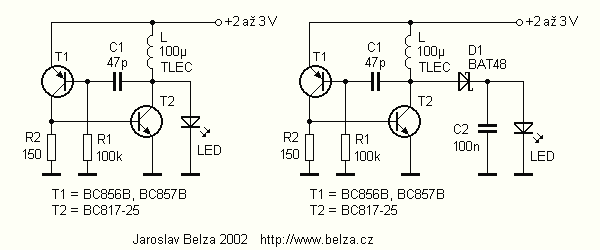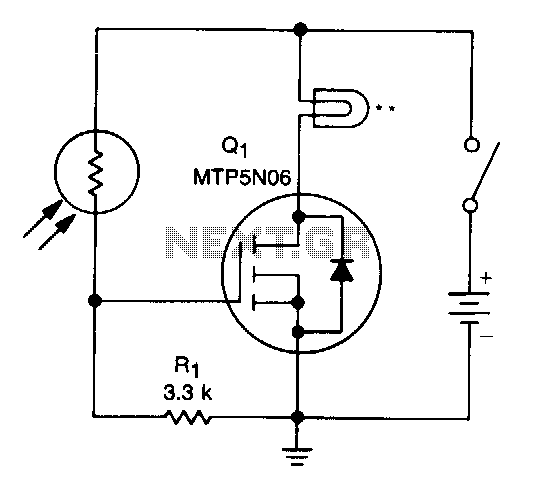
Rugged lamp driver

This circuit is designed to drive filament lamps with a nominal rating of 200 mA at 60 V DC using a CMOS logic signal. The lamp or load is connected in series with the Darlington transistor TR1 and an emitter resistor R5. The Zener diode ZD1 provides a stable reference voltage at the collector of the optical coupler IC2. When the logic control signal from the processor activates the optocoupler through IC1, a base drive is supplied to TR1, thereby turning on the lamp.
The circuit utilizes a Darlington transistor configuration, which is known for its high current gain and is particularly suitable for applications requiring the control of higher power loads. The use of a 200 mA, 60 V DC filament lamp indicates that the circuit is intended for moderate power applications, where efficient control is necessary.
The optical coupler (IC2) serves to electrically isolate the control signal from the high-voltage circuit, enhancing safety and preventing potential damage to the control circuitry. The Zener diode (ZD1) plays a crucial role in maintaining a consistent reference voltage, which is essential for the reliable operation of the optocoupler, ensuring that it switches appropriately in response to the logic signal.
The design includes an emitter resistor (R5), which is integral for stabilizing the current through the Darlington transistor. This resistor aids in setting the operating point of the transistor and helps prevent thermal runaway by providing feedback. The circuit's ability to switch on the lamp effectively when the control signal is present demonstrates its suitability for applications such as lighting control in various electronic systems.
Overall, this circuit exemplifies a practical approach to controlling high-power loads with low-power logic signals, ensuring both functionality and safety in its operation.This circuit is capable of driving filament lamps of nominal rating 200 mA at 60 V dc from a CMOS logic signal. The lamp or load is connected in series with the Darlington transistor TR1 and emitter resistor R5. The Zener diode ZD1 establishes a soft reference voltage on the collector of the optical coupler IC2.
When the logic control signal from the processor switches the optocoupler on via IC1, base drive is applied to TR1 and the lamp is switched on.
The circuit utilizes a Darlington transistor configuration, which is known for its high current gain and is particularly suitable for applications requiring the control of higher power loads. The use of a 200 mA, 60 V DC filament lamp indicates that the circuit is intended for moderate power applications, where efficient control is necessary.
The optical coupler (IC2) serves to electrically isolate the control signal from the high-voltage circuit, enhancing safety and preventing potential damage to the control circuitry. The Zener diode (ZD1) plays a crucial role in maintaining a consistent reference voltage, which is essential for the reliable operation of the optocoupler, ensuring that it switches appropriately in response to the logic signal.
The design includes an emitter resistor (R5), which is integral for stabilizing the current through the Darlington transistor. This resistor aids in setting the operating point of the transistor and helps prevent thermal runaway by providing feedback. The circuit's ability to switch on the lamp effectively when the control signal is present demonstrates its suitability for applications such as lighting control in various electronic systems.
Overall, this circuit exemplifies a practical approach to controlling high-power loads with low-power logic signals, ensuring both functionality and safety in its operation.This circuit is capable of driving filament lamps of nominal rating 200 mA at 60 V dc from a CMOS logic signal. The lamp or load is connected in series with the Darlington transistor TR1 and emitter resistor R5. The Zener diode ZD1 establishes a soft reference voltage on the collector of the optical coupler IC2.
When the logic control signal from the processor switches the optocoupler on via IC1, base drive is applied to TR1 and the lamp is switched on.





